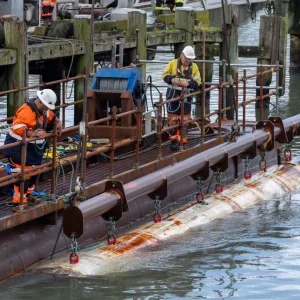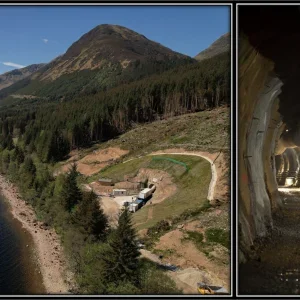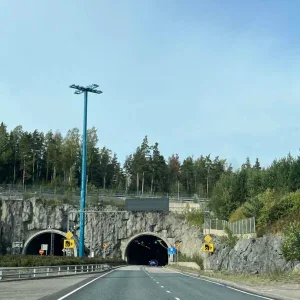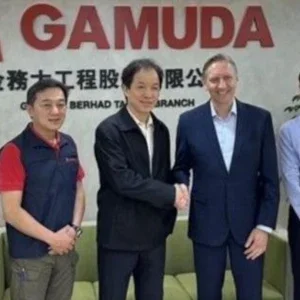On 2 July, Mbhazima Shilowa, premier of Gauteng Provine in South Africa, announced that the Bombela Consortium had been selected as the preferred bidder for the 80km long Gautrain Rapid Rail Link, (T&TI, February, p6), that includes 20km of twin bore tunnels.
The project will be executed as a public private partnership (PPP) to include the design, construction, operation and maintenance, as well as financing of the complete system. The concession granted to the Bombela Consortium will allow for a 4.5 year construction period, followed by a 15 year operating period. Shilowa said: “By announcing the preferred bidder for the Gautrain Project, we as the Gauteng Provincial Government, are joining hands with the private sector in the biggest PPP project yet tackled in the country and indeed in Africa.”
The Bombela Consortium is a partnership between Bombardier Transportation, Bouygues Travaux Publics, Murray & Roberts, the Loliwe companies and RATP Développement. The civil works will be carried out by Bouygues Construction, Murray & Roberts and Loliwe Rail Contractors. This will include 10 stations, including three underground stations, 20km of tunnelled section, 9km of viaducts and 10M m3 of earthworks. Bombardier Transportation with Loliwe Rail Express will deliver the rolling stock, with final assembly in South Africa. The operation and maintenance of the concession will be performed by RATP Développement with South African partners.
With the preferred bidder announced, the final route proclamation process can commence. Broadly, the scheme features a north-south spine between Tshwane and Johannesburg, together with an east-west spine between Johannesburg International Airport (JIA) and Sandton.
The south-north route starts at Park Station in central Johannesburg’s business district and proceeds north underground for 6km to Rosebank station. From there a further 5km stretch continues to Sandton. The line eventually comes to the surface 4km past Sandton at Marlboro. A further tunnelled section is planned to traverse a hill near Pretoria station near the limit of the north-south route. For the east-west spine, a tunnel is planned for parts of the alignment at JIA.
The geology is subject to confirmation as part of the detailed planning process, although it is expected to comprise shales, quarzites and conglomerates. With the tunnel sections varying between 6m and 15m, drill and blast has been identified as the most suitable method of excavation as it is considered more adaptable than TBM to the varying ground conditions and has the added advantage of utilising the extensive local expertise.
The procurement process will now continue through the best and final offer phase followed by negotiations for financial closure. A spokesman for the province said: “It would be premature to announce any cost as this would seriously jeopardise the next phase of the procurement process.” Previous estimates had pegged the costs at around US$667M.







